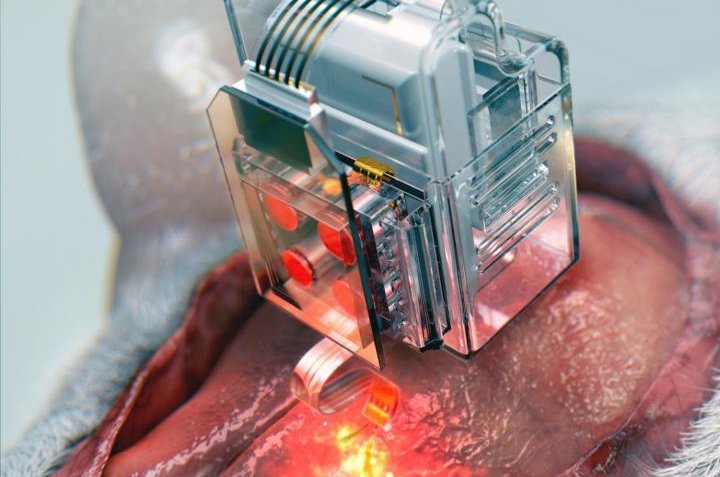Scientists installed a reusable drug cartridge-turned-brain implant on a mice subject. The implant, which delivers drugs and light to manipulate neurons, is controlled by bluetooth technology via a smartphone interface. Photo by Korea Advanced Institute of Science and Technology
Aug. 6 (UPI) -- Scientists have developed a way to manipulate a mouse's neural circuits remotely. The technology, described this week in the journal Nature Biomedical Engineering, could be used to study disorders like Parkinson's and Alzheimer's.
The device features a small brain implant, a replaceable drug cartridge that uses drugs and light to target and activate specific neurons. The implant can be controlled via bluetooth technology.
"The wireless neural device enables chronic chemical and optical neuromodulation that has never been achieved before," lead study author Raza Qazi, a researcher with the Korea Advanced Institute of Science and Technology and University of Colorado Boulder, said in a news release.
Similar technologies are mostly rigid and cumbersome, limiting the subject's movement. The implants can also cause lesions to develop on soft brain tissue.
Unlike other implants, the new device doesn't cause lesions and can remain in place on the test subject's brain for several months without running out of drugs.
Scientists used a soft, thin probe to insert the drug delivery implant, which features several microfluidic channels and tiny LEDs. Using a smartphone, scientists can trigger a precise sequence of drug and light deliveries, activating specific neurons.
"It allows us to better dissect the neural circuit basis of behavior, and how specific neuromodulators in the brain tune behavior in various ways," said Michael Bruchas, a professor of anesthesiology and pharmacology at the University of Washington School of Medicine. "We are also eager to use the device for complex pharmacological studies, which could help us develop new therapeutics for pain, addiction, and emotional disorders."
The research team is now working to ensure the technology is suitable for clinical use.















